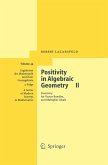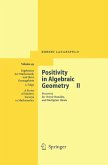In the early 70's and 80's the field of integrable systems was in its prime youth: results and ideas were mushrooming all over the world. It was during the roaring 70's and 80's that a first version of the book was born, based on our research and on lectures which each of us had given. We owe many ideas to our colleagues Teruhisa Matsusaka and David Mumford, and to our inspiring graduate students (Constantin Bechlivanidis, Luc Haine, Ahmed Lesfari, Andrew McDaniel, Luis Piovan and Pol Vanhaecke). As it stood, our first version lacked rigor and precision, was rough, dis connected and incomplete. . . In the early 90's new problems appeared on the horizon and the project came to a complete standstill, ultimately con fined to a floppy. A few years ago, under the impulse of Pol Vanhaecke, the project was revived and gained real momentum due to his insight, vision and determination. The leap from the old to the new version is gigantic. The book is designed as a teaching textbook and isaimed at a wide read ership of mathematicians and physicists, graduate students and professionals.
From the reviews of the first edition:
"The aim of this book is to explain 'how algebraic geometry, Lie theory and Painlevé analysis can be used to explicitly solve integrable differential equations'. ... One of the main advantages of this book is that the authors ... succeeded to present the material in a self-contained manner with numerous examples. As a result it can be also used as a reference book for many subjects in mathematics. In summary ... a very good book which covers many interesting subjects in modern mathematical physics." (Vladimir Mangazeev, The Australian Mathematical Society Gazette, Vol. 33 (4), 2006)
"This is an extensive volume devoted to the integrability of nonlinear Hamiltonian differential equations. The book is designed as a teaching textbook and aims at a wide readership of mathematicians and physicists, graduate students and professionals. ... The book provides many useful tools and techniques in the field of completely integrable systems. It is a valuable source for graduate students and researchers who like to enter the integrability theory or to learn fascinating aspects of integrable geometry of nonlinear differential equations." (Ma Wen-Xiu, Zentralblatt MATH, Vol. 1083, 2006)
"The aim of this book is to explain 'how algebraic geometry, Lie theory and Painlevé analysis can be used to explicitly solve integrable differential equations'. ... One of the main advantages of this book is that the authors ... succeeded to present the material in a self-contained manner with numerous examples. As a result it can be also used as a reference book for many subjects in mathematics. In summary ... a very good book which covers many interesting subjects in modern mathematical physics." (Vladimir Mangazeev, The Australian Mathematical Society Gazette, Vol. 33 (4), 2006)
"This is an extensive volume devoted to the integrability of nonlinear Hamiltonian differential equations. The book is designed as a teaching textbook and aims at a wide readership of mathematicians and physicists, graduate students and professionals. ... The book provides many useful tools and techniques in the field of completely integrable systems. It is a valuable source for graduate students and researchers who like to enter the integrability theory or to learn fascinating aspects of integrable geometry of nonlinear differential equations." (Ma Wen-Xiu, Zentralblatt MATH, Vol. 1083, 2006)
Aus den Rezensionen: "... Um das Noether-Prinzip präzise zu formulieren, muss man einen begrifflichen Rahmen wählen ... Das vorliegende Buch benutzt die Poissongeometrie ... als einen solchen Rahmen. ... Das vorliegende Buch ist die erste Darstellung des Themenkomplexes in Buchform. Die Autoren haben es als Lehrbuch mit einem weiten Adressatenkreis konzipiert. Dabei hatten sie die schwierige Aufgabe zu bewältigen, im richtigen Umfang Hintergrundinformationen anzubieten, ohne sich in zusammenhangslosen Einführungen in die relevanten mathematischen Gebiete zu verlieren. Ich denke, dies ist ihnen sehr gut gelungen ..." (J. Hilgert, in: Jahresbericht der Deutschen Mathematiker-Vereinigung, 2007, Vol. 107, Issue 1, S. 4-6)








